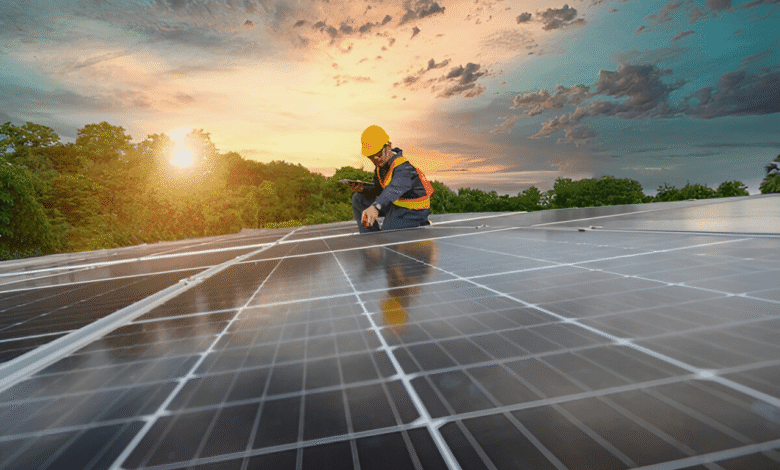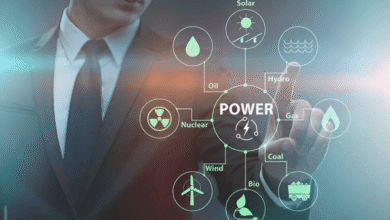Top Renewable Energy Innovations in the U.S. (2025)
Renewable energy innovations in the U.S. Discover cutting-edge solar, wind, storage & hydrogen breakthroughs transforming America's clean.

The United States continues to lead the charge in renewable energy innovations, with groundbreaking advancements shaping a cleaner, more sustainable future. As climate change concerns escalate, 2025 has ushered in cutting-edge technologies that enhance efficiency, reduce costs, and accelerate the transition from fossil fuels. From next-gen solar panels to advanced energy storage systems, these innovations are revolutionizing how energy is produced, stored, and distributed. This article explores the most impactful renewable energy innovations in the U.S. (2025), highlighting their potential to transform the energy landscape.
The push for renewable energy has never been stronger, and 2025 marks a pivotal year for innovation in the U.S. energy sector. With federal policies like the Inflation Reduction Act (IRA) fueling investments and technological breakthroughs, the country is rapidly advancing toward its decarbonization goals. Solar, wind, and battery technologies are evolving at an unprecedented pace, while emerging solutions like green hydrogen and geothermal energy gain traction. These developments not only combat climate change but also create jobs, enhance energy security, and reduce dependence on foreign oil.
Top Renewable Energy Innovations in the U.S.
Next-Generation Solar Power Innovations
Solar energy remains a cornerstone of the U.S. renewable energy strategy, and 2025 has introduced remarkable advancements in photovoltaic (PV) technology. Perovskite solar cells, once confined to labs, are now entering commercial production, offering higher efficiency rates and lower manufacturing costs than traditional silicon panels. Companies like Oxford PV and First Solar are leading the charge, with perovskite-silicon tandem cells achieving efficiencies exceeding 30%.
Bifacial Solar Panels
Another breakthrough is bifacial solar panels, which capture sunlight on both sides, increasing energy output by up to 20%. These panels are particularly effective in large-scale solar farms, where even marginal efficiency gains translate into significant energy production boosts. Additionally, solar skin technology custom-designed panels that blend with rooftops is gaining popularity among homeowners who prioritize aesthetics without sacrificing performance.
Floating solar farms
Floating solar farms are also expanding, particularly in reservoirs and lakes, where they reduce water evaporation while generating clean energy. The U.S. Army Corps of Engineers has initiated several floating solar projects, demonstrating the potential for dual-use land applications. With these innovations, solar power is becoming more versatile, efficient, and accessible than ever before.
Revolutionary Wind Energy Technologies
Wind energy continues to be a dominant force in the U.S. renewable sector, with offshore wind projects experiencing exponential growth. In 2025, floating wind turbines are making waves, allowing installations in deeper waters where wind speeds are higher and more consistent. States like California and Maine are pioneering these projects, leveraging federal funding to develop gigawatt-scale floating wind farms.
Wind Turbines
Another game-changer is bladeless wind turbines, which use vibrational energy to generate electricity with minimal noise and environmental impact. Companies like Vortex Bladeless are testing these systems in urban and rural settings, offering a compact alternative to traditional turbines. Meanwhile, advances in AI-driven predictive maintenance are optimizing wind farm operations, reducing downtime, and extending turbine lifespans.
Breakthroughs in Energy Storage Solutions
Energy storage is critical for overcoming the intermittency of renewable sources, and 2025 has introduced groundbreaking battery technologies. Solid-state batteries are emerging as a safer, more efficient alternative to lithium-ion, with companies like QuantumScape and Toyota making significant strides in commercialization. These batteries offer higher energy density, faster charging, and longer lifespans, making them ideal for grid storage and electric vehicle.
Hybrid wind-solar farms
Hybrid wind-solar farms are also gaining traction, combining the strengths of both technologies to deliver consistent energy output. These integrated systems are particularly effective in regions with variable weather patterns, ensuring a steady power supply regardless of conditions. With these innovations, wind energy is set to play an even larger role in the U.S. renewable energy mix. The future of energy is cleaner, smarter, and more efficient than ever before.
Promising Development
Another promising development is flow batteries, which use liquid electrolytes to store large amounts of energy for extended durations. Vanadium redox flow batteries, in particular, are being deployed in utility-scale projects, providing reliable backup power for renewable grids. Additionally, thermal energy storage systems, which store excess energy as heat in molten salts or other materials, are gaining traction in industrial applications.
The Rise of Green Hydrogen
Green hydrogen produced using renewable energy to power electrolysis is emerging as a key player in decarbonizing heavy industries. In 2025, the U.S. is scaling up production with projects like the Advanced Clean Energy Storage hub in Utah, which aims to produce and store green hydrogen at an unprecedented scale. Beyond batteries, gravity-based storage solutions like Energy Vault’s stacked concrete blocks are proving viable for long-duration energy storage.
Clean Fuel is particularly
This clean fuel is particularly valuable for sectors like steel, shipping, and aviation, where electrification is challenging. Major corporations, including Amazon and Boeing, are investing in green hydrogen to meet their sustainability targets. Additionally, hydrogen fuel cells are being integrated into power plants and transportation networks, offering zero-emission alternatives to fossil fuels.
Geothermal Energy Expansion
Geothermal energy, often overlooked, is experiencing a resurgence thanks to enhanced geothermal systems (EGS). Unlike traditional geothermal plants, which rely on natural hot springs, EGS uses drilling and hydraulic stimulation to access heat from deeper underground. The Department of Energy’s FORGE initiative is leading research in this field, with pilot projects demonstrating the feasibility of EGS across the U.S.
Fervo Energy
Startups like Fervo Energy are also making strides, utilizing horizontal drilling techniques borrowed from the oil and gas industry to improve efficiency. With the potential to provide 24/7 baseload power, geothermal energy could become a cornerstone of the renewable grid. These systems use excess renewable energy to lift heavy blocks, releasing stored energy when needed by lowering them. With these innovations, energy storage is becoming more scalable, efficient, and cost-effective.
Read More: 15 Must-Have Gadgets for Remote Workers in the U.S.
Conclusion
The renewable energy innovations in the U.S. (2025) highlight a future where clean, reliable, and affordable energy is within reach. From ultra-efficient solar panels to advanced storage solutions and green hydrogen, these technologies are reshaping the energy landscape. Federal support, private investment, and technological ingenuity are driving rapid progress, ensuring that the U.S. remains at the forefront of the global energy transition.
As these innovations scale, they promise to reduce carbon emissions, create jobs, and enhance energy independence. The road to a sustainable future is challenging, but with continued advancements in renewable energy, the U.S. is well-positioned to lead the way. The progress made in 2025 sets a strong foundation for even greater breakthroughs in the years to come, bringing the world closer to a net-zero future.
FAQs
What are the most promising renewable energy innovations in 2025?
Perovskite solar cells, floating wind turbines, solid-state batteries, green hydrogen, and enhanced geothermal systems are among the top innovations.
How does green hydrogen contribute to decarbonization?
Green hydrogen replaces fossil fuels in heavy industries and transportation, offering a zero-emission alternative when produced using renewable energy.
Are bladeless wind turbines effective?
Yes, they generate Renewable Energy through vibrations, reducing noise and environmental impact while maintaining efficiency in certain applications.
What makes solid-state batteries better than lithium-ion?
They offer higher energy density, faster charging, longer lifespans, and improved safety by eliminating flammable liquid electrolytes.
How is geothermal energy being expanded in the U.S.?
Enhanced geothermal systems (EGS) use advanced drilling techniques to access deeper heat sources, making geothermal viable in more locations.










